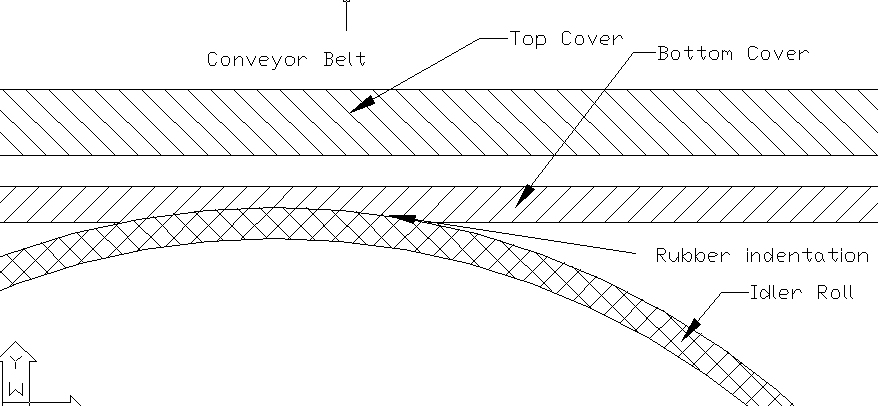HELIX delta-T Calculation Methods 
Helix delta-T6 has three main methods for calculating conveyors:
- ISO 5048
- Calculation based ISO 5048 methods - similar to DIN 22101
- CEMA
- Calculation Conveyor Equipmeent Manufacturers' method
- VISCO
- Calculation based on conveyor belt rheology - uses the conveyor belt Rubber properties to calculate the friction factor
The ISO 5048 is the International Standard method and is closely related to the German DIN 22101 Standard. The Helix delta-T program follows the requirements of this standard with the addition of an automatic friction factor estimation based on belt sag. This f factor estimation has been successfully used to design and build many thousands of conveyors.
The CEMA (Conveyor Equipment Manufacturers Association) methed uses the methods and formulae detailed in the CEMA manual.
The VISCO method in the delta-T program uses the conveyor belt Rubber properties to calculate the belt - roller indentation and combines this with the material and belt flexure losses and idler drag and scuffing resistance to accurately calculate the friction factor of the conveyor. This method is a very accurate method of calculating conveyors as it takes into account the actual rubber properties of the belt to calculate the friction factor. This method allows the user to design conveyors which utilise the latest technology including the Low Resistance Rubber belts made by leading manuficturers around the world.
Viscoelastic Calculation Method

Indentation resistance is caused by the idler roll pressing into the relatively soft belt cover rubber. It is intuitively apparent that the more the penetration of the idler roll into the belt cover, the more resistance there is likely to be. Many people have researched this subject and names such as Jonkers, Spaans, Hager, Lodewijks and Wheeler come to mind. From this research it is evident that the main factors which affect the indentation resistance are the actual rubber properties of the belt cover, the diameter of the idler rolls and the load on the idler roll, which for a fixed tonnage and belt speed is dependent on the idler spacing.
Jonkers developed the following formula for the Indentation resistance

Typical makeup of the friction of a long overland conveyor

With delta-T it is very easy to compare the different methods - simply build your conveyor model and then press the ISO, CEMA and VISCO buttons to compare the results.
